IAQ IQ Spring, 2015
©2015 Jeffrey C. May
As far as I’m concerned, fiberglass insulation should never be used below-grade.
The material collects biodegradable dust, starting from the day it is installed. Some species of mold can grow when the relative humidity (RH) is over 80%, so dust in fiberglass can serve as nutrient for mold growth when the basement RH has not been adequately controlled. (Few homeowners use dehumidifiers in the summer, and those who do use them usually operate the big-box-store toys; more on those later).


Although it is unusual, moisture can condense in fiberglass insulation. I’ve been in basements on a humid day after the weather has been cool for a while prior to my visit, and I could wring water out of the ceiling fiberglass insulation. The water was there due to condensation that occurred because the temperature of the insulation was below the dew point of the recently infiltrated ambient air.

Even when fiberglass insulation looks pristine (such as in new construction), it can be contaminated with mold growth, because the material rested on a dusty basement floor prior to installation, or because construction workers sawed wood in the basement, and sawdust collected in the fiberglass fibers. How many builders dehumidify during construction?
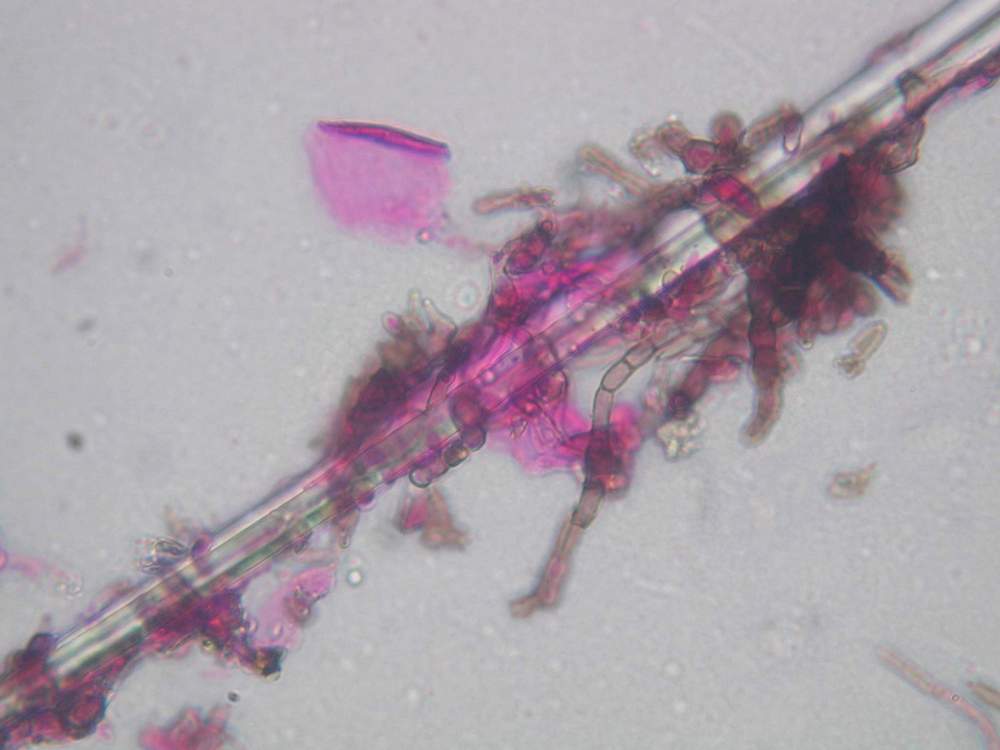
If you are inspecting a home for a client with mold concerns, there is an unfinished basement or crawl space in which the RH has not been adequately controlled, and there is exposed fiberglass present, warn your client about the possibility of mold growth in the insulation.
You can take a small sample of insulation for analysis and send it to me for a 24-hour turn around (if you’d like directions on how to gather the sample, email me; jeff@mayindoorair.com). Fiberglass can also be easily tested by taking a mold-test Petri dish and pressing it gently against the fiberglass at two or three locations (remote from any heating equipment). If there is mold growth present, in a few days the dish will fill with many similar colonies of mold. (I presented a paper at the IAQA conference in March on mold growth in basement and crawl-space insulation; almost 50% of the samples I take have significant mold growth!)
Fiberglass attracts pests, who love to nest in the stuff (mouse urine looks like reddish stains).

And mold can grow on mouse urine trails and fecal matter.
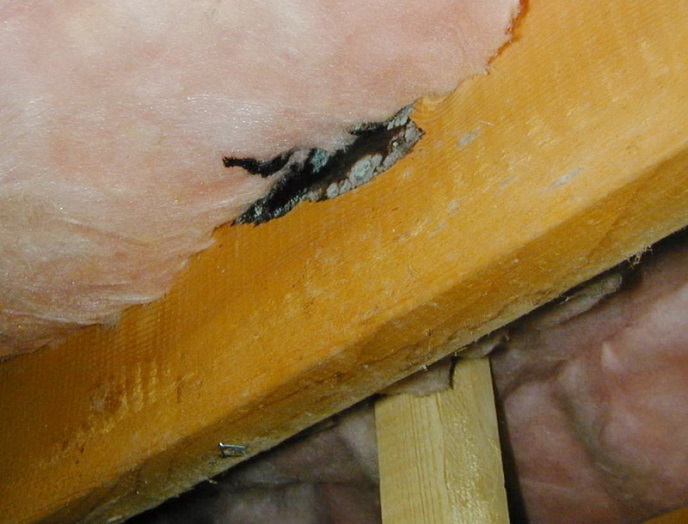
Shrews are pests that can follow mice indoors. These odoriferous creatures look like mice but have longer snouts. In the last five years, we’ve received several calls per month from people complaining about an odd odor indoors. Some describe it as “musty but not really like mold” or “moldy but with a chemical smell, too.”
For some reason, shrews have begun nesting in wall and ceiling cavities; perhaps they are following one of their favorite preys – mice – indoors. A pair of shrews nesting in a wall or ceiling cavity can make several rooms – if not the whole house – uninhabitable, because they emit a body-musk odor (somewhat similar to skunk), and because they sometimes defecate and urinate in large piles that become moldy. So if you see signs of mice in an unfinished basement in which there is exposed fiberglass, warn your clients about both kinds of pests.
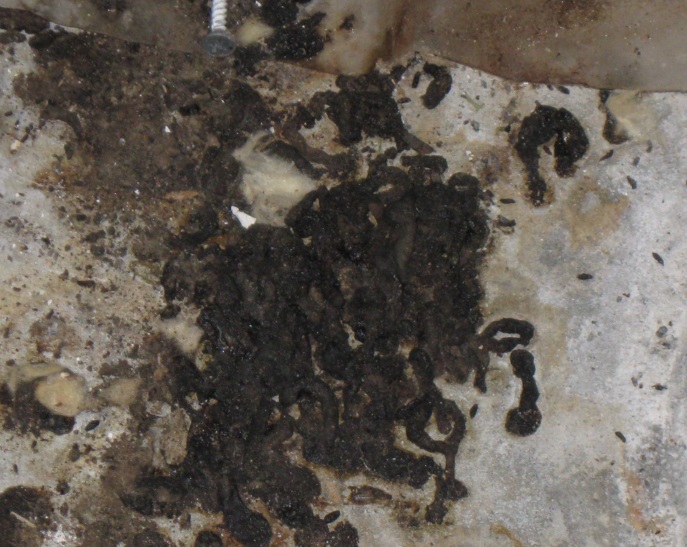
Finished basements (even the newer Owens-Corning system) aren’t immune from these problems. When finished walls are constructed next to the foundation and insulated with fiberglass, there is (or invariably will be) mold growth in the insulation due to elevated RH (as air cools, its RH rises; and the air next to the foundation wall is cooled by that contact). By-products of this growth can flow into the room through outlets, and be aerosolized during any repair or maintenance work that breaks into a finished wall. Rodent activity as well as wind-pressure differences can also send spores into the habitable space. In addition, odor molecules from mold growth can also diffuse directly through drywall gypsum.
Some finished basements reek from concealed mold growth, but have few mold spores in the ambient air; other basements may have extensive mold growth (visible or concealed) without any noticeable basement odor at all. If you do an air test for spores, don’t give your clients the impression that there is no mold problem if the test results come back as “normal” for spores in the indoor air, because there may be growth in wall or ceiling cavities.
It’s rare for occupants to adequately control the RH in basements by dehumidification in three seasons. In a four-season climate, between April and October, the RH in an unfinished basement should be kept at no more than 50%, and at no more than 60% in a finished (insulated) space. Air conditioning can help control the RH in finished basements, but occupants should still use a thermo-hygrometer to measure the RH, and add dehumidification as needed. Finished or unfinished, basements do not need to be dehumidified in the winter, but in the heating season, finished basements should be heated consistently, with the thermostat set at about 60°F, whether the space is in use or not. (If the house air is humidified in winter and house air enters a cold basement, mold may grow on walls or furniture near the floor.)
Very few dehumidifiers come with adequate (MERV-8) filtration, so dust and mold build up on the wet coil. Therma-Stor dehumidifiers (www.thermastor.com) are expensive but they are the only dehumidifiers that I recommend, because all their models come with proper filtration.
I don’t like finished basements, because they are prone to developing mold-growth problems. That said, they can be constructed and maintained in ways that minimize the chances of mold growth (refer your clients to my book The Mold Survival Guide).
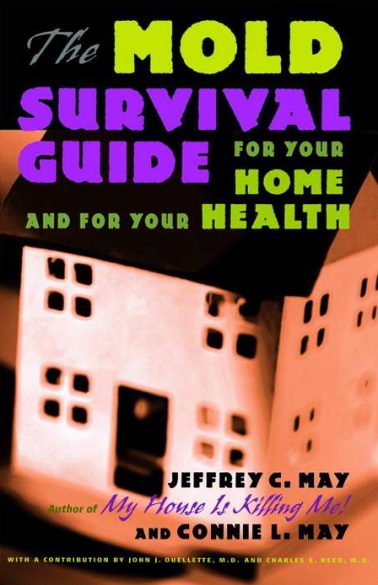
As for insulating a basement, I recommend attaching solid sheet-foam insulation such as polyisocyanurate board (with a fire-resistant covering) to the foundation walls, rather than using fiberglass. For finished basement spaces, XPS sheet-foam insulation can be placed on the basement floor, with plywood on top and then carpeting and pad. Of course, carpeting in the basement is a big risk because the fibers capture biodegradable dust that can never be fully removed, even with the most thorough cleaning, and because basements are prone to water intrusion. Ceramic tile installed directly on concrete is preferable (and the ideal heat for a finished basement is radiant floor heat).
Check out our website for less technical newsletters that you can give to your clients: www.mayindoorair.com.
We all have to have a license to operate an automobile. I’ve often said that anyone who owns a home should also have a license “to operate the property.” Luckily, there’s a terrific book that I recommend that was written by a home inspector, Tom Feiza, and it’s titled How to Operate Your Home. If you want to give your clients a “new-home” gift, give them this book, which can teach them a lot about maintenance and repairs.
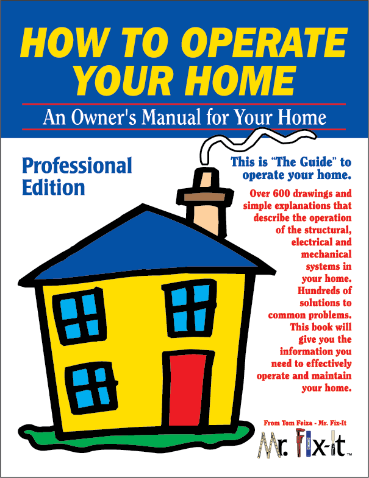
I’d like to include a question and answer section in some of these newsletters. Email me a question, and you may find yourself mentioned in print! Every time I include a question and answer column, someone who sent in a question for that newsletter will win a complimentary copy of one of my books. Winners will be chosen at random.
